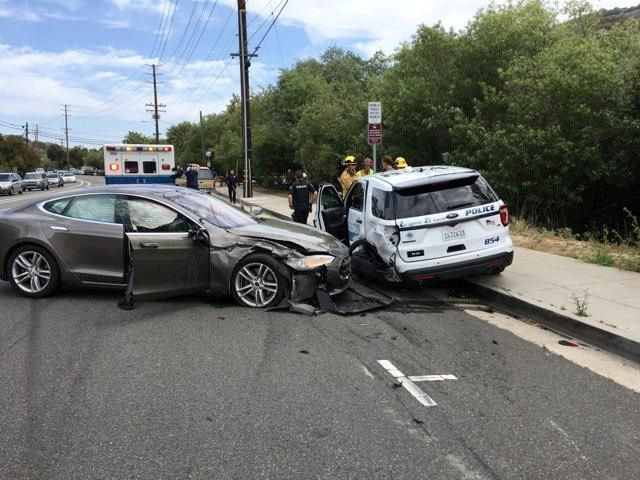Tesla Top Secret Facility Revealed: What Happens In Elon Musk's Hidden Lab?

Tesla electric vehicles (EVs) are among the safest on the planet for their passengers. It's a fact attested by safety awards lavished on Tesla every year.
Among these awards: five-star ratings from the U.S. National Highway Traffic Safety Administration and five stars from both the European and Australasian New Car Assessment Programs.
The only way a car gets to become super safe is for its maker to smash a lot of them in crash safety tests. Tesla does this as a matter of course at its secret and massive crash-test facility in Fremont, California.
The Tesla Crash Test Lab is housed in what those that have visited it call a humdrum warehouse while the facility itself looks, well, it doesn't look like any of the high-tech crash-test labs we've seen on TV. Tesla's Lab is more bare bones, you might say, and uses tech at hand jury-rigged for the job at hand.
As an example, the lab doesn't use powerful industrial motors to pull crash test cars along a track to smash into concrete walls or other test cars. Instead, the lab uses a pair of Model S Performance rear drive units. These motors bolted to the floor are connected to a 100 kWh battery pack. The system provides 1,200 nm (885 foot-pounds of torque), which is more than enough to serve its purpose.
Tesla says this plainly simple set-up gives its crash test engineers really precise torque modulation. It also allows for smooth acceleration of the test car, and provides the exact speed required for a given test at the point of impact. These tests are measured to an accuracy of 0.023 mph at 50 mph.
Another example of Tesla ingenuity is the pedestrian crash test rig. This rig consists of a FANUC R-2000iB robot arm modified for crash testing. Its job is to hurl dummy heads and limbs at doors and fenders.
Then there's the custom-assembled array of hydraulic pistons designed to find the breaking point in Tesla's custom-designed seats. That breaking point is incredibly high. The middle row of a Model X can handle at least 96 kilonewtons of force -- or more than 21,000 pounds.
And, since Tesla is a tech company, computer crash simulations are an integral part of its safety tests. Tesla relies on a high performance computing cluster with up to 144 CPUs for a full-vehicle, day-long crash test simulation.
Simulations using this powerful machine almost mimic real life. One visualization produced from these simulations when overlaid on footage from a real crash test virtually matched the real-world results with almost millimeter precision.
Individual components are also rigorously tested using simulations and the results matched with real-world results.

© Copyright IBTimes 2025. All rights reserved.




















